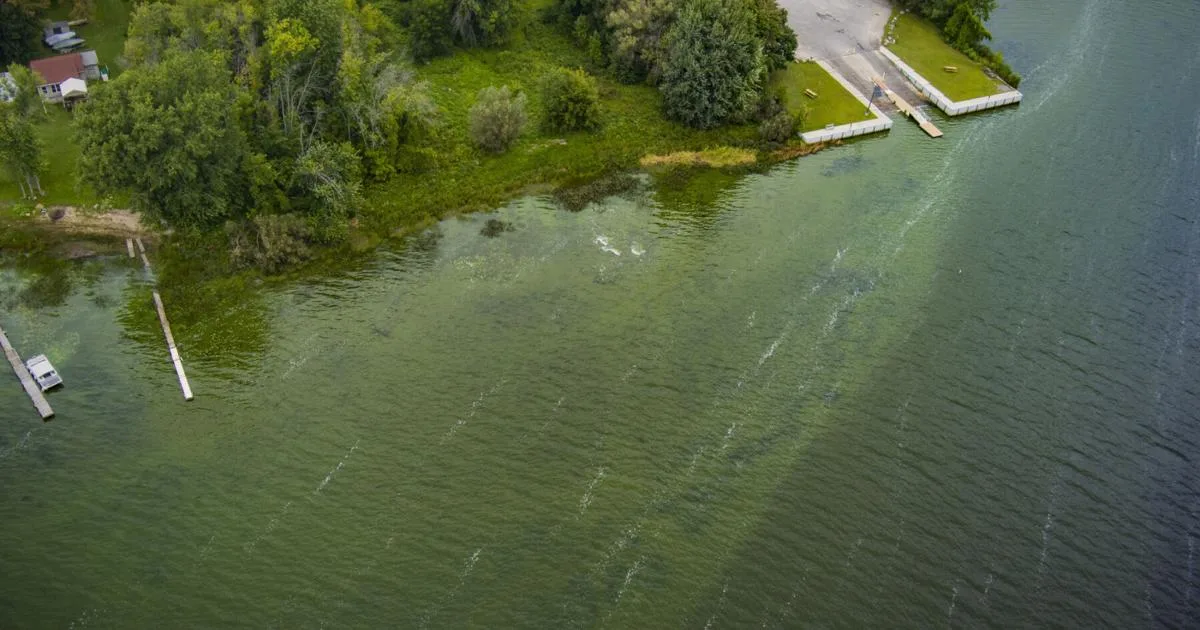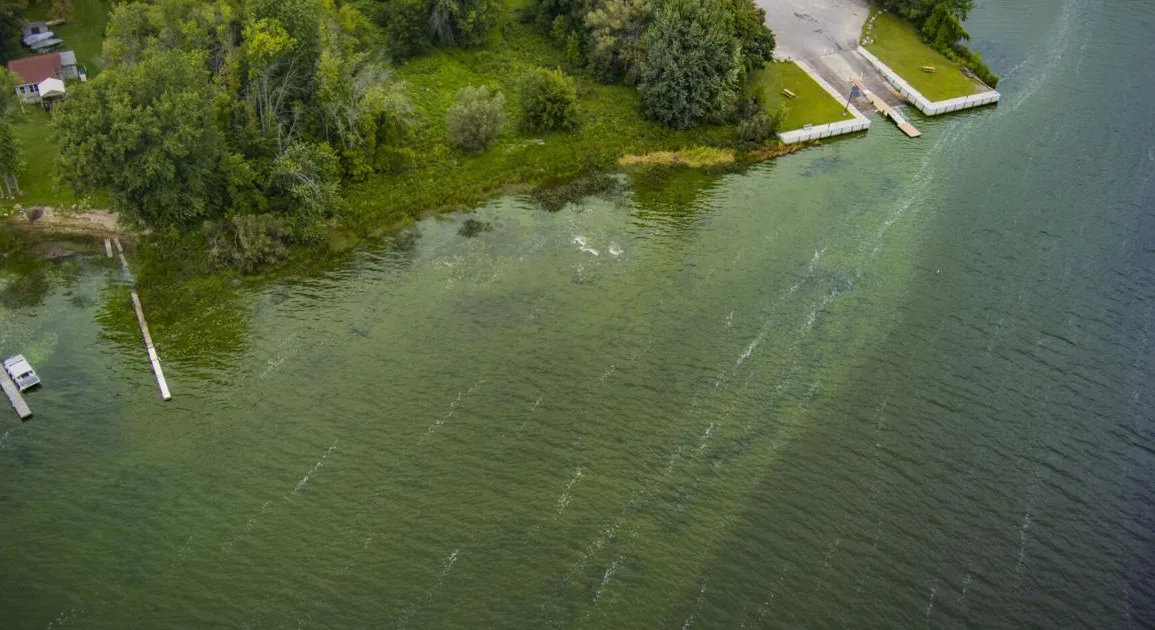
EDWARDSVILLE — St. Lawrence County Public Health is warning everyone to not wade, swim, kayak or even canoe in Black Lake due to a confirmed algal bloom that is considered harmful.
Released on Wednesday, the alert states that a harmful algal bloom had been confirmed by the state Department of Environmental Conservation (DEC) and it is considered to be lake-wide. Black Lake is almost 11,000 acres in size, bisected by a bridge on State Highway 58.
At the state boat launch in Edwardsville, warning signs have been placed there for users of the lake.
Public Health is asking the public to take precautions and avoid wading, swimming, water-skiing, kayaking and even canoeing in the popular fishing destination.
Pets and farm animals should also avoid drinking or wading in the water of Black Lake, according to Public Health.
According to DEC’s website, harmful algal blooms consist of “visible patches of cyanobacteria, also called blue-green algae” and several types can “produce toxins and other harmful compounds that can pose health risks to people and animals through ingestion, skin contact, or inhalation.”
Greg Boyer, director of the Great Lakes Research Consortium and Emeritus Professor of Biochemistry at SUNY- College of Environmental Science and Forestry, said that algal blooms require approximately five things to happen in order to occur.
“There needs to be a source of food (nutrients), sufficient sunlight, warm temperatures, a starting seed population and low winds,” stated Boyer, “Warming temperatures is one of the issues, but not the only issue. Water column stability (low winds) is often the driving factor. For example in the Finger Lakes, it was too windy and rainy this year for the blooms to occur earlier in the summer.”
Boyer said that smaller lakes like Black Lake are not the only ones that receive these harmful algal blooms. It’s all based on the conditions.
“As we get to our September Indian summer, conditions settle down where we are seeing bright sunshine, low winds and warm temperatures, all excellent conditions for blooms to occur. It is not particular to smaller lakes, but they are often protected and more sensitive to these conditions,” stated Boyer, “HAB (harmful algal blooms) are equal opportunity offenders so can happen in small, medium and large lakes. Lake Erie has a beautiful algal bloom each year.”


